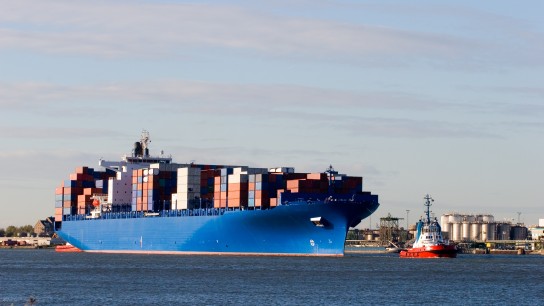Carolyn O’Connor
Brenntag North America, Inc.
Marine Emissions Americas

At Brenntag, safety is of paramount importance and is an essential part of our corporate strategy – SAFETY FIRST is our core value, in terms of the safety and health of our employees, as well as to product and process safety.
Our primary objective is to be the world’s safest chemical distributor. We adhere to the highest standards of safety and guarantee the purity of our chemical products.
Headquartered in Germany, Brenntag delivers chemical products to customers around the globe and has an unparalleled reputation in the industry.
Read more about our firm commitment to sustainability here.

At Brenntag we offer sodium hydroxide solution in concentrations from 20-50% and in quantities from 25-1,200kg. We also offer 25kg units of caustic soda flakes and pearls. The transportation of hazardous materials – including caustic soda – is subject to overlapping federal, state and local laws and regulations, as well as international regulations.
In addition to the legal requirements for the transportation of hazardous materials, the laws of nature also place numerous de facto restrictions on the way sodium hydroxide can be safely packaged for transport.
For instance, caustic soda can corrode or react with aluminum and shed hydrogen atoms which becomes an explosive hydrogen gas. Caustic soda should never be stored in aluminum containers for transport or storage.
Other metals that interact with sodium hydroxide to produce hydrogen include magnesium, zinc, tin and chromium; caustic soda should never be kept in containers constructed of any of these materials. Caustic soda doesn’t react with stainless steel making stainless steel drums, tanks and pipelines the standard in the industry.
However, caustic soda does interact with some plastics and can corrode the walls of containers or bags constructed of plastic causing dangerous leaks or spills. For this reason, high-density polyethylene (HDPE) barrels and containers are used for packaging. As previously mentioned, caustic soda releases thermal energy when mixed with water.
For this reason, dry caustic soda should be in airtight containers to prevent moisture from reaching the material. Caustic soda should not be packaged in paper or cardboard, as those materials tend to be both porous and susceptible to combustion. Liquid sodium hydroxide can be transported in tanks, drums or through pipelines. The same restrictions regarding packaging and container materials apply when caustic soda is being transported in its solid state.
As the largest global distributor of urea, Brenntag understands your need for high quality product delivered safely. We can safely deliver urea to bunkering stations and inland barges, as well as to seagoing vessels. Brenntag adheres to strict quality and handling guidelines specified by ISO 18611-1:2014.
Using high quality urea will aid the longevity of the catalyst in the SCR system.
Urea solutions of 40% can be affected by temperature. ISO regulations recommend that Urea should be stored out of direct sunlight in a well ventilated, cool, dry place.
Ideal storage temperatures for 40% Urea should be stored between 5°F (-15°C) and 77°F (25°C). The reason for this recommendation is because the urea solution can lose its potency if stored at a high temperature for prolonged periods of time. Urea solution is subject to freezing, product potency is not impacted by any freeze/thaw experienced.
If you're worried about storage, we can assist you in developing equipment storage solutions to ensure your product is best preserved in all weather conditions.
While Urea 40% is classified as a non-hazardous material, it is corrosive to most metals. Stainless steel is the only metal used in manufacturing pump equipment. Urea 40% is not flammable as classified by WHMIS/OSHA criteria.
In case of a fire, containers may be extinguished with water.
Brenntag North America, Inc.
Marine Emissions Americas
Brenntag Holding GmbH
Marine Emissions EMEA
Brenntag Asia Pacific Pte Ltd
Marine Emissions Asia Pacific